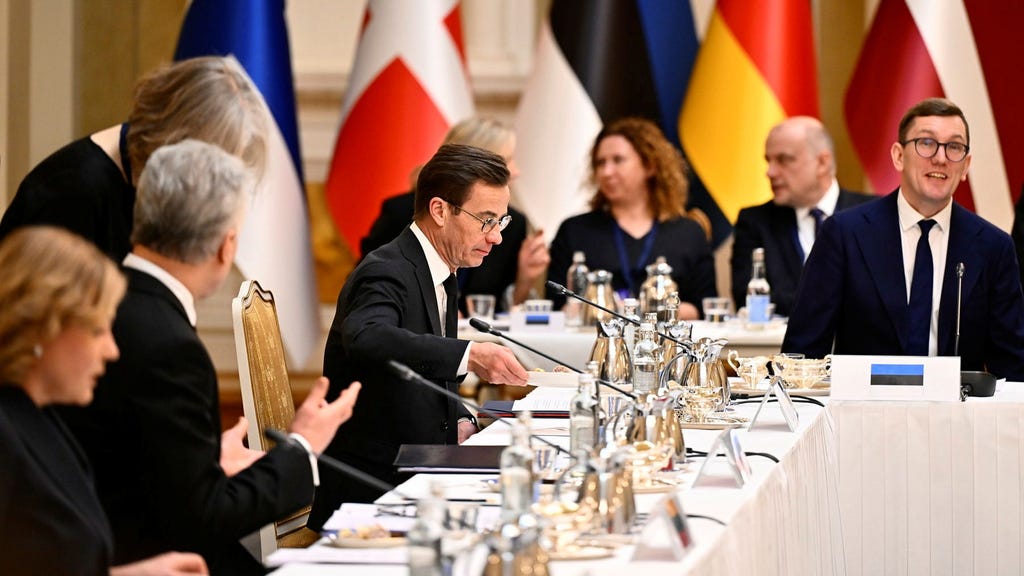Paragraph 1: A Baltic Security Summit Amidst Rising Tensions
Eight NATO member states bordering the Baltic Sea convened in an extraordinary summit in Helsinki, prompted by a series of concerning incidents targeting underwater electricity and data cables. The meeting, deemed a success by Finnish President Alexander Stubb, underscored the growing anxieties surrounding the vulnerability of critical infrastructure in the region, particularly in light of suspected activities by Russia’s "shadow fleet." The summit was attended by heads of state and government from Denmark, Germany, Poland, Latvia, Lithuania, Estonia, Finland, and Sweden, alongside EU Commission Vice President Henna Virkkunen. The discussions centered on bolstering security cooperation and developing concrete measures to address the escalating threats.
Paragraph 2: Key Outcomes and Action Points
President Stubb highlighted ten key outcomes of the summit, emphasizing the unified commitment to strengthening Baltic Sea security. Firstly, the nations pledged to act decisively against any threats to the region’s infrastructure. Secondly, NATO will enhance its presence in the Baltic Sea, deploying an unspecified number of drones, frigates, and patrol vessels under the command of NATO Supreme Allied Commander Europe, Christopher Cavoli. This enhanced presence will be coordinated through a new entity, the Baltic Center, and will be supported by modernized electricity and data cable networks. Thirdly, the summit participants reaffirmed their resolve to effectively counter the activities of the Russian shadow fleet.
Paragraph 3: Legal Frameworks and Investigative Cooperation
Further action points included the formation of a joint declaration similar to the one established between Finland and Estonia concerning critical infrastructure protection. A specialized legal team composed of experts from each nation’s foreign ministry will be tasked with reviewing and updating navigation laws to address the evolving security landscape. Finland committed to sharing a detailed report outlining its handling of the Eagle S incident, where the vessel was suspected of sabotaging the Estlink 2 cable on Christmas Day by dragging an anchor along the seabed. This incident served as a catalyst for the summit and highlighted the need for a more proactive and coordinated response to potential threats.
Paragraph 4: Addressing the Shadow Fleet and Hybrid Warfare
The Russian shadow fleet, comprising vessels operating outside conventional regulations and often used to circumvent sanctions, emerged as a central concern. These vessels are suspected of involvement in the recent cable incidents and are viewed as a key element of Russia’s hybrid warfare strategy in the region. While leaders refrained from directly accusing Russia, there was a shared understanding of the need for enhanced coordination and a more robust defense posture. Several participants commended Finland’s decisive response to the Eagle S incident, contrasting it with previous incidents where investigations were conducted without immediate action. The emphasis on proactive measures reflects a shift towards deterrence and a recognition of the increasing importance of protecting underwater infrastructure.
Paragraph 5: Denmark’s Strategic Role and the Öresund Treaty
Denmark’s geographical location grants it a crucial role in controlling access to the Baltic Sea. Prime Minister Mette Frederiksen expressed deep concern over the unfolding events and highlighted the need to reevaluate the Öresund Treaty, an 1857 agreement that facilitates passage through the Danish straits. Given Russia’s historical involvement in the treaty, Frederiksen advocated for revisiting its provisions in light of the current security environment. She stressed the importance of collaborative efforts, both within NATO and the European Union, to implement new measures such as stricter vessel insurance requirements and enhanced information sharing.
Paragraph 6: Continued Vigilance and International Collaboration
The summit concluded with a sense of urgency and a commitment to ongoing vigilance. A parallel incident involving a suspicious vessel circling the Baltic Pipe, a gas pipeline connecting Norway to Poland via Denmark, further underscored the need for continued monitoring and collaborative action. The suspected link between this vessel and the Russian shadow fleet further highlighted the multifaceted nature of the threat. The summit’s outcomes represent a significant step towards a more unified and proactive approach to security in the Baltic Sea, recognizing the interconnectedness of critical infrastructure and the need for international collaboration to effectively counter hybrid threats.














